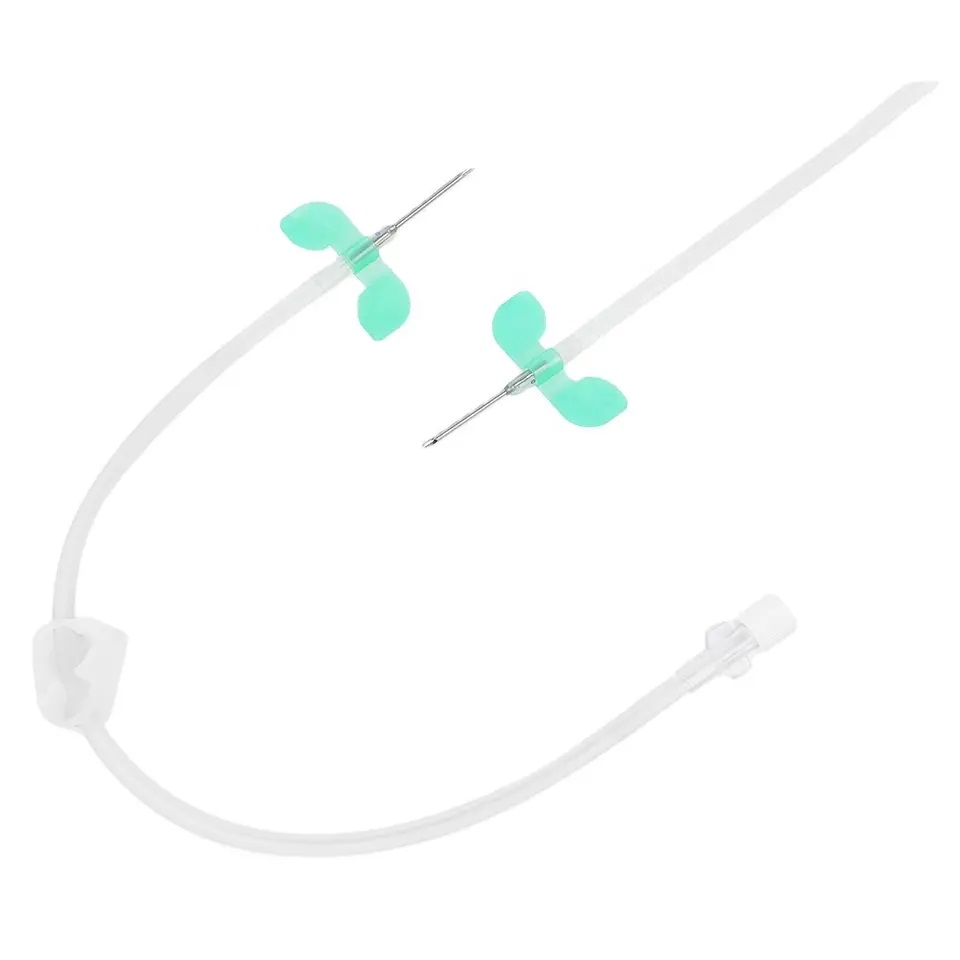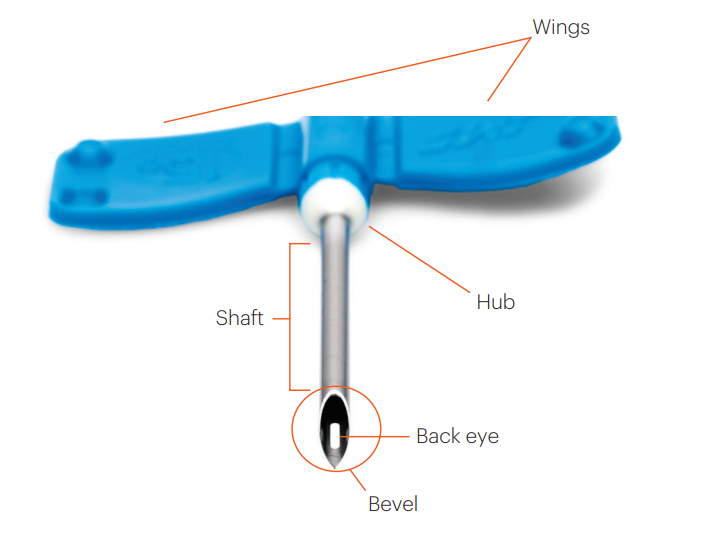When it comes to dialysis, selecting the appropriate AV fistula needle is critical. This seemingly small medical device plays a significant role in ensuring patient safety, comfort, and treatment efficiency. Whether you are a clinician, healthcare provider, or medical supply manager, understanding how to choose the right fistula needle for dialysis is vital.
In this article, we’ll explore what an AV fistula needle is, why it matters, and the 9 main factors to consider when choosing one. We’ll also touch on common sizes like the AV fistula needle 15G, 16G, and 17G to help guide your selection.
What Is an AV Fistula Needle?
An arteriovenous (AV) fistula needle is a specialized dialysis needle used to access a patient’s bloodstream via an arteriovenous fistula during hemodialysis. The AV fistula is a surgically created connection between an artery and a vein, typically in the arm, that allows high blood flow necessary for effective dialysis.
The AV fistula needle is inserted into the fistula to draw blood out for cleaning and then return it back to the body. These needles are essential medical supplies in dialysis centers and hospitals, and selecting the right one is not just about compatibility with equipment—it’s about optimizing patient outcomes.
Structure of AV fistula needle
9 Main Factors to Choose the Right AV Fistula Needle
1. Needle Gauge
The needle gauge determines the diameter of the needle and directly affects blood flow. Common sizes include:
AV fistula needle 15G: Offers a larger diameter, allowing higher blood flow rates. Typically used for adult patients with mature fistulas.
AV fistula needle 16G: A versatile size balancing flow rate and patient comfort.
AV fistula needle 17G: Smaller diameter, suitable for pediatric patients or those with fragile veins.
Choosing the right gauge involves considering the patient’s vein condition, blood flow needs, and treatment plan.
Table 1. Matching gauge and blood flow rate
| Blood flow rate (BFR) | Recommended needle gauge |
| <300 ml/min | 17 gauge |
| 300-350 ml/min | 16 gauge |
| >350-450 ml/min | 15 gauge |
| >450 ml/min | 14 gauge |
2. Needle Length
Length is another key factor. Needles are generally available in lengths ranging from 25mm to 38mm. The length of the needle should be enough to reach the walls of the fistula without being too long, which can cause damage. Proper needle length improves insertion accuracy and minimizes discomfort.
Table 2. Matching needle length according to the distantce to the skin
| Distance to the skin surface | Recommended needle length |
| <0.4 cm below the skin surface | 3/4″ and 3/5″ for fistulas |
| 0.4-1 cm from the skin surface | 1″ for fistulas |
| ≥1 cm from the skin surface | 1 1/4″ for fistulas |
3. Bevel Design
The bevel is the slanting edge of the needle. A bevel design that is too sharp can cause damage to the fistula walls, while a bevel that is too dull can result in difficulty in puncturing the skin. The ideal bevel design will vary for each individual depending on the size and condition of their fistula. Common types include:
Short bevel: Easier to control, less likely to tear tissue
Long bevel: Sharper and allows smoother entry, but may require more skill
Selecting the appropriate bevel can significantly reduce patient pain and complications during cannulation.
4. Needle Material
Needle material affects both performance and patient safety. High-quality stainless steel needles are most common due to their strength, sharpness, and biocompatibility. Aseptic Fistula needles should be made of high-quality, medical-grade materials to reduce the risk of infection. It’s crucial to choose needles from a reputable av fistula needle manufacturer to ensure safety and durability.
5. Rotating Hub Needles
Rotating hub needles allow for 360-degree rotation without displacing the needle from its site. This feature is especially useful in minimizing tubing kinks and adapting to patient movement during dialysis sessions. It also improves comfort and simplifies adjustments during treatment.
6. Wings for a Secure Grip
Winged AV fistula needles offer added stability and grip. These flexible butterfly wings allow caregivers to secure the needle more easily and provide a better hold during insertion. Wings are particularly useful for self-cannulating patients and help reduce accidental dislodgement during dialysis.
7. Mechanisms to Prevent Blood Backflow
Preventing blood backflow is crucial for patient safety. Some AV fistula needles are designed with one-way valves or internal mechanisms that reduce the risk of backflow, helping to:
Prevent clotting in the tubing
Maintain sterility
Improve dialysis efficiency
This feature becomes especially important in longer dialysis sessions or with patients prone to clotting issues.
8. Needle Retraction Mechanism
Modern needle retraction mechanisms are designed to enhance safety by reducing the risk of needlestick injuries after use. These mechanisms automatically retract the needle into a protective casing post-cannulation, ensuring both patient and caregiver safety.
Retractable needles are increasingly becoming standard in clinical settings due to their compliance with sharps safety regulations.
9. Prioritize Patient Comfort
Ultimately, the best AV fistula needle is the one that maximizes patient comfort. Needle sharpness, coating, insertion angle, and even packaging ergonomics all contribute to the overall experience. A smoother, less painful dialysis session leads to higher patient compliance and better outcomes over time.
Why Does the Right Fistula Needle Matter?
Choosing the correct fistula needle for dialysis is not just a technical decision—it directly impacts patient health and comfort. Here’s why it matters:
Improves dialysis efficiency: The right needle size and design promote optimal blood flow rates.
Reduces complications: Properly selected needles minimize trauma, infiltration, and clotting.
Enhances safety: Features like retraction mechanisms and anti-backflow designs protect patients and staff.
Increases comfort: A needle that is easy to insert and causes minimal discomfort boosts patient trust and willingness to undergo regular treatment.
With hemodialysis being a long-term, life-sustaining treatment, every detail counts. That’s why clinics and healthcare professionals must invest time in selecting the right dialysis needle for each individual case.
Conclusion
In summary, the AV fistula needle is more than just a tool—it’s a critical component in the delivery of safe and effective dialysis care. From gauge size and material to retraction features and patient comfort, every aspect plays a role.
Whether you are choosing between an AV fistula needle 15G, 16G, or 17G, consider the nine main factors discussed above to make an informed choice. By doing so, you not only enhance clinical outcomes but also significantly improve the patient’s dialysis experience.
Post time: May-12-2025









